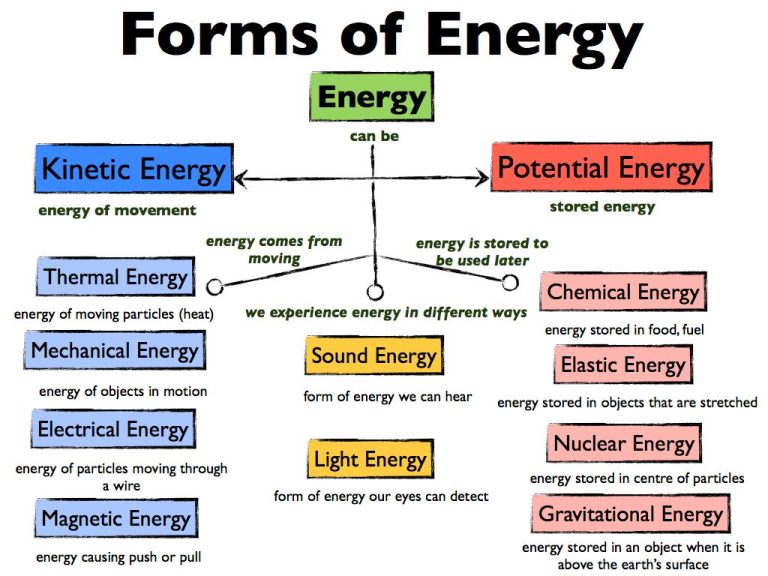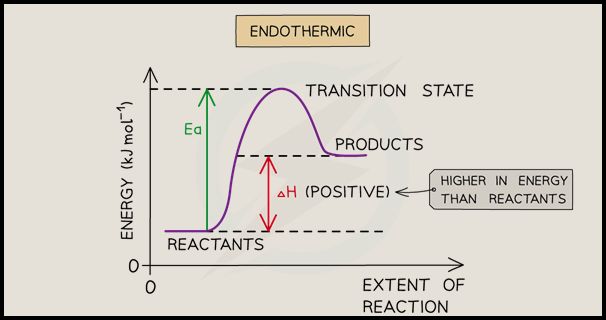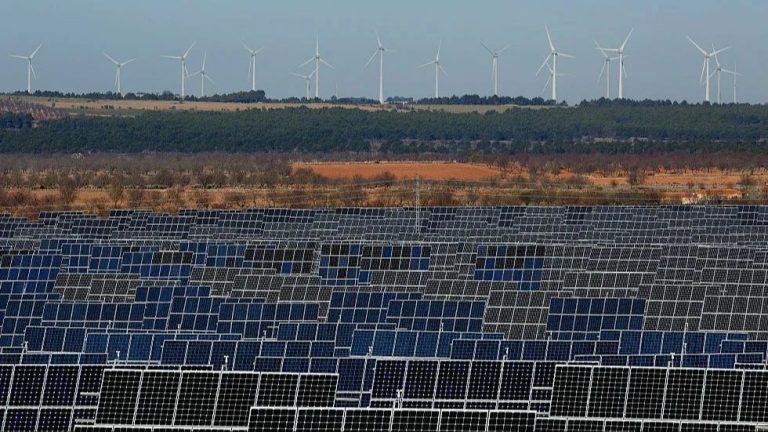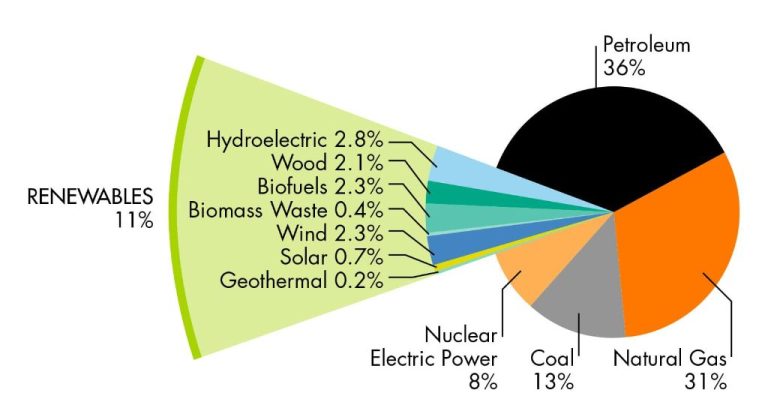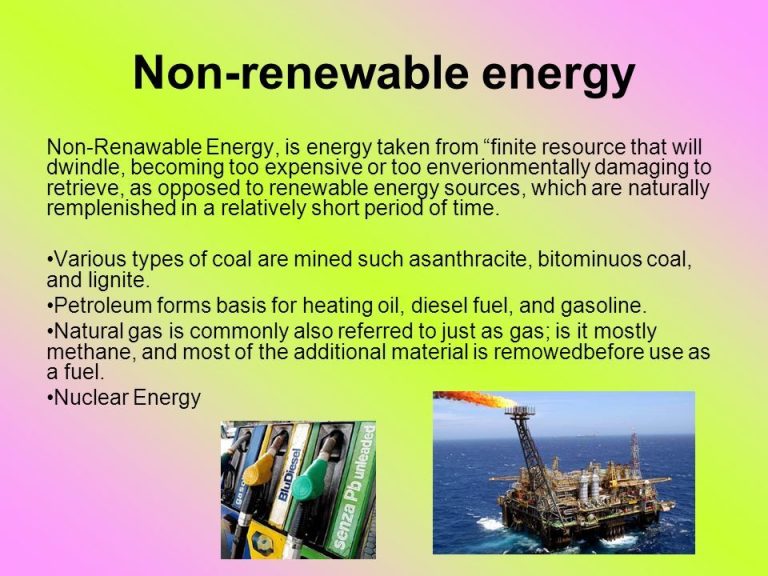Is Kinetic Energy Mechanical Or Electrical?
Kinetic energy is the energy an object possesses due to its motion. The faster an object moves, the more kinetic energy it has. Kinetic energy depends on the mass and velocity of an object. The kinetic energy formula is KE = 1/2 mv2, where m is mass and v is velocity.
There is some debate over whether kinetic energy should be classified as a mechanical or electrical form of energy. While kinetic energy is associated with motion and its causes are mechanical in nature, some of its effects and applications involve electricity. This article will examine if kinetic energy is fundamentally a mechanical or electrical phenomenon.
Kinetic Energy Basics
Kinetic energy is the energy of motion. An object that has motion – whether it is vertical or horizontal motion – has kinetic energy. The amount of kinetic energy depends on two variables: mass and velocity. Kinetic energy is directly proportional to both the mass and the velocity squared of an object. This means that the greater the mass and velocity, the greater the amount of kinetic energy.
The relationship between kinetic energy (K), mass (m), and velocity (v) is shown in the following kinetic energy equation:
K = 1/2 * m * v^2
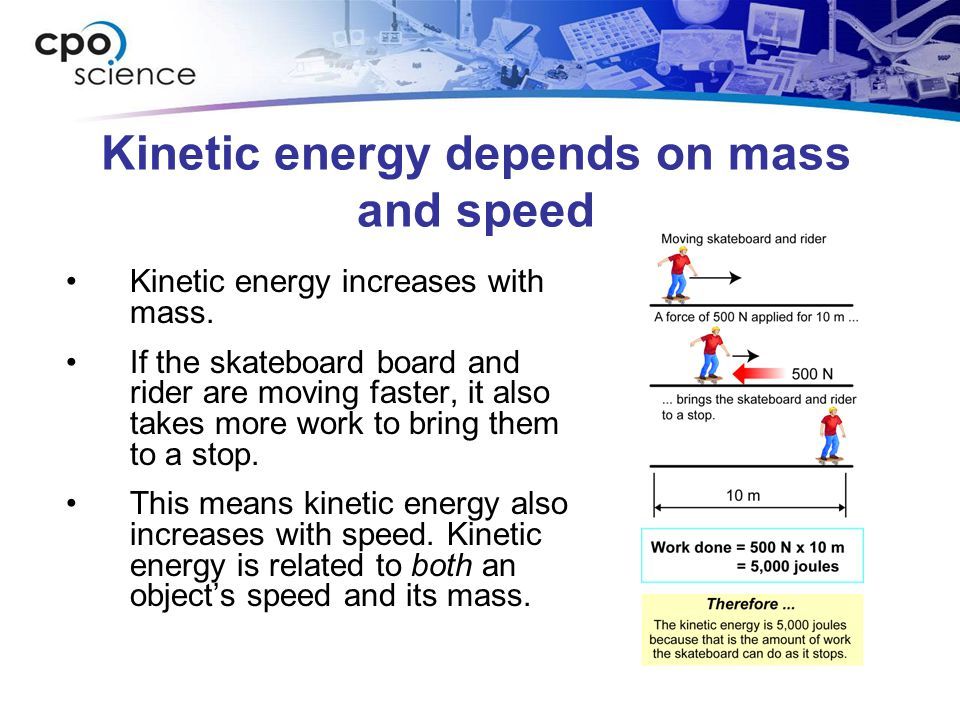
Where m is the mass in kilograms and v is the velocity in meters per second. This shows that as velocity increases, kinetic energy increases exponentially because velocity is squared. Likewise, increasing mass results in a linear increase in kinetic energy. Even small objects can have high kinetic energy if their velocity is very fast. Understanding the basics of kinetic energy is key to understanding where it fits within other energy types.
Mechanical Energy
Mechanical energy is the energy associated with the motion and position of an object. It is the sum of an object’s potential energy and kinetic energy.
Potential energy is stored energy that an object has due to its position or shape. For example, a ball held at a height above the ground has potential energy due to gravity. As the ball falls, this potential energy is converted into kinetic energy.
Kinetic energy is the energy associated with motion. A moving object has kinetic energy equal to one-half its mass multiplied by the square of its velocity. For example, a rolling ball has kinetic energy due to its motion.
The sum of an object’s potential and kinetic energy is its mechanical energy. This mechanical energy is constant in a closed system without outside forces. As an object’s potential energy decreases, its kinetic energy will increase by the same amount, and vice versa.
Electrical Energy
Electrical energy refers to the energy produced by the movement of charged particles like electrons. It has to do with the flow of electric charge or electric current. For electrical energy to exist, charged particles like electrons must be moving through a conductor or material that allows for the flow of electricity.
More specifically, electrical energy exists when there is a difference in electric potential between two points, which creates an electric field. The electric field causes electrons to move and flow, creating an electric current. As the electrons move through the electric circuits and devices, they transfer energy. This energy that is transferred by the moving electrons is electrical energy.
So in summary, electrical energy deals with electrons, electric charge, electric current, and the difference in electric potential that causes electrons to flow and move, which allows energy to be transferred through circuits and devices. It is produced by the motion of charged particles like electrons.
Kinetic Energy is Mechanical
Kinetic energy is a form of mechanical energy since it deals with the motion of objects. Mechanical energy is the energy associated with the movement or position of an object. There are two main types: kinetic energy and potential energy. Kinetic energy is the energy possessed by an object due to its motion. It depends on the object’s mass and velocity.
For example, a moving car has kinetic energy due to its motion. The faster the car moves, the more kinetic energy it has. A baseball thrown by a pitcher also has kinetic energy due to its motion towards the batter. The kinetic energy comes from the pitcher transferring energy into the ball through throwing motion. Faster pitches have more kinetic energy.
Kinetic energy is directly related to an object’s mass and velocity. The kinetic energy formula is KE = 1/2mv^2, where m is the object’s mass and v is its velocity. This shows that an increase in either mass or velocity will result in greater kinetic energy.
Overall, kinetic energy clearly falls under the category of mechanical energy since it deals with the motion and speed of objects. Other forms like potential energy deal with stored energy, while kinetic energy deals with energy in motion.
Kinetic Energy Converts to Electrical Energy
While kinetic energy is inherently mechanical in nature, it can be converted into electrical energy under certain circumstances. The most common example of this is in electrical generators. In generators, the kinetic energy of motion is converted into electrical energy that can then be used to power electrical devices and circuits.
Here’s a more detailed explanation of how this works in generators:
Generators contain wire coils and magnets. When the generator rotor (containing magnets) spins near the stator (containing wire coils), it creates motion between the magnetic field and the coils. This motion pushes and pulls electrons within the wire coils, inducing an electric current. So the kinetic energy of the spinning rotor gets converted into the electrical energy of the moving electrons in the coils.
This generator principle is used across many applications to harvest kinetic energy and convert it to electricity. Some examples include:
- Wind turbines – Kinetic energy from wind spins turbine blades connected to a rotor and generator.
- Hydroelectric power plants – Moving water spins hydroturbines connected to generators.
- Fossil fuel and nuclear power plants – Pressurized steam spins turbine generators.
- Hand crank flashlights and radios – Manually spinning a crank spins a generator rotor.
So in summary, while kinetic energy starts out as mechanical energy of motion, generators and other transduction mechanisms are able to convert it into usable electrical energy.
Potential Confusion
Despite kinetic energy being inherently mechanical in nature, there is some potential for confusion around it being electrical. This stems from kinetic energy’s ability to be converted into electrical energy under certain circumstances.
A common example of this is in power plants. In hydroelectric dams, the kinetic energy of flowing water is converted into electricity through turbines. The mechanical energy of the moving water rotates the turbine, which then spins a generator to produce electrical energy.
Similarly, wind turbines convert the kinetic energy of blowing wind into electrical energy. The kinetic mechanical energy of the wind causes the turbine blades to rotate, which spins a generator that creates electricity.
In both these cases, while the initial energy source (moving water or wind) is mechanical kinetic energy, it results in the production of electrical energy for human use. This can understandably lead some people to associate kinetic energy more closely with electricity.
However, it’s important to note that the kinetic energy itself is intrinsically mechanical. It is only through specialized machines like turbines and generators that we are able to convert that mechanical energy into usable electricity on demand. The kinetic energy exists naturally in a mechanical form before any conversion takes place.
So in summary, while there are some practical applications where kinetic energy converts to electrical energy, kinetically energy itself is fundamentally a form of mechanical energy.
Mechanical Nature
Even though kinetic energy can be converted into electrical energy, it is fundamentally mechanical in nature. This is because kinetic energy stems directly from the motion and velocity of physical objects. The faster or heavier an object moves, the more kinetic energy it possesses. This energy is intrinsically tied to the object’s physical attributes and movement through space.
Kinetic energy does not originate from electrical, chemical, or nuclear sources – it arises purely from an object’s motion. Electrical devices like generators and turbines can convert kinetic motion into electricity, but they do not create the original kinetic energy. This conversion does not change the mechanical essence of kinetic energy.
When analyzing kinetic energy, physicists always refer back to the physical dynamics of mass, velocity, momentum, and motion. These are hallmarks of mechanical energy, even in cases where electricity generation occurs downstream. The core identity of kinetic energy remains mechanic. While interconversions occur, the mechanical nature persists as the primary driver and wellspring.
Practical Applications
Kinetic energy’s mechanical nature allows it to be harnessed in many practical applications. For example, wind turbines capture the kinetic energy of moving air to generate electrical power. The spinning blades are rotated by the wind, turning a shaft connected to a generator to produce electricity.
Similarly, hydropower stations convert the kinetic energy of flowing water into electrical energy. The force of the water moves turbine blades, which spin a generator to create power. The downstream kinetic energy of rivers can be harnessed without the need for dams in this way.
Transportation applications also take advantage of kinetic energy’s mechanical properties. Hybrid and electric cars use regenerative braking to convert the vehicle’s kinetic energy into electrical energy when braking. This charges the battery and improves overall energy efficiency.
Understanding that kinetic energy is fundamentally mechanical in nature allows engineers to develop innovative ways to capture and convert kinetic energy into usable electrical power. This makes kinetic energy an important renewable energy source.
Conclusion
In summary, kinetic energy is fundamentally mechanical in nature. Kinetic energy is the energy of motion – the energy an object possesses by virtue of its movement. The faster or heavier an object, the more kinetic energy it has. This makes kinetic energy an inherent property of matter in motion, directly related to the mechanics of physics.
While kinetic energy is mechanical, it can convert into electrical energy under certain circumstances. For example, a spinning turbine can convert the kinetic energy of moving fluid into electrical current. However, the mechanical motion always precedes and enables the electrical output. The generation of electricity relies on harnessing kinetic energy through mechanical means.
So in essence, kinetic energy starts and remains mechanical. Any resulting electrical energy stems from the mechanical nature of kinetic energy, not the other way around. Kinetic energy’s basis in motion and mechanics firmly establishes it as a mechanical form of energy.

